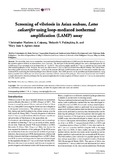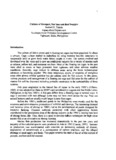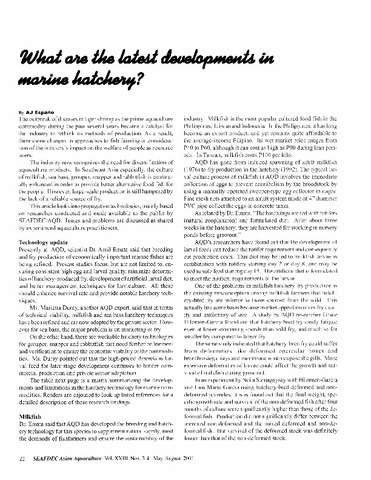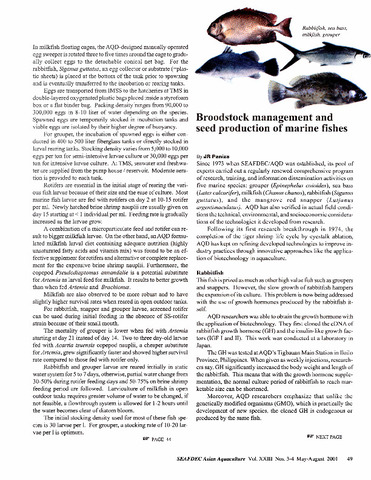Screening of vibriosis in Asian seabass, Lates calcarifer using loop-mediated isothermal amplification (LAMP) assay
Share
Abstract
The aim of this study was to standardize a loop-mediated isothermal amplification (LAMP) assay for the detection of Vibrio harveyi , the causative agent of vibriosis in Asian seabass, Lates calcarifer. The dnaJ gene of the bacterial pathogen was used as the target gene for the LAMP assay. It was optimized at an incubation time of 1 h at 63°C. The assay was highly specific for V. harveyi and did not cross-react with other bacterial pathogens offish. However, the assay was able to detect V. harveyi that was isolated from infected shrimps. The limit of detection of the LAMP assay was 40 pg of DNA mL-1 or 40 fg of the genomic DNA per LAMP reaction and was 10 times more sensitive than conventional PCR in detecting the bacterial pathogen from infected samples. The LAMP products can be quantified spectrophotometrically using hydroxynaphthol blue (HNB) dye and showed positive correlation with the amount of the pathogen. These results demonstrated that LAMP is a simple and sensitive detection technique that has potential application for routine diagnosis of vibrosis caused by V. harveyi in Asian seabass and other aquatic species.
Suggested Citation
Caipang, C. M. A., Pakingking, R. V., Jr., & Apines-Amar, M. J. S. (2012). Screening of vibriosis in Asian seabass, Lates calcarifer using loop-mediated isothermal amplification (LAMP) assay. Human & Veterinary Medicine , 4(2), 52-57. http://hdl.handle.net/10862/2172
Subject
Taxonomic term
Collections
- AQD Journal Articles [1249]
Related items
Showing items related by title, author, creator and subject.
-
Culture of grouper, sea bass and red snapper
Toledo, Joebert D. (University of the Philippines Aquaculture Society, Inc., 2001)Marine fish production has increased dramatically in the past ten years and majority of the cultured species were produced in Asia in 1992. Increase in production was accompanied with concerns on increasing outbreak of ... -
What are the latest developments in marine hatchery?
Españo, A. J. (Aquaculture Department, Southeast Asian Fisheries Development Center, 2001) -
Broodstock management and seed production of marine fishes
Paniza, J. R. (Aquaculture Department, Southeast Asian Fisheries Development Center, 2001)




